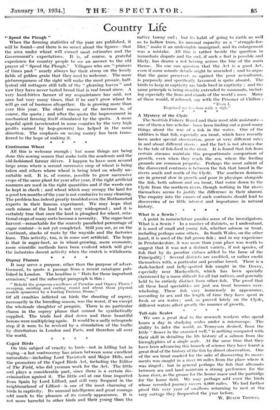Caged Birds
On this subject of cruelty to birds—not in killing but in caging—a hot controversy has arisen between some excellent naturalists—including Lord Tavistock and Major Hills, and the promoters of the Caged Birds Act, including the Editor of The Field, who did yeoman work for the Act. The little owl plays a considerable part, since there is a certain dis- crimination against it. The little owl at one time imported from Spain by Lord Lilford, and still very frequent in the neighbourhood of Lilford—is one of the most charming of birds in captivity. Its unusual intelligence and great courage add much to the pleasure of its comely appearance. It is not more harmful to other birds and their young than the native tawny owl ; but its habit of going to earth as well as to hollow trees, its unusual capacity as a " struggle-for- lifer," make it an undesirable immigrant, and its enlargement• was a- mistake. All this is rather beside the question in immediate dispute and the owl,.if such a -feat is possible and likely, has drawn a red herring across the line of the main theme. No one can question that the -Act is a good Act, even if some minute details might be amended ; and to argue that the game preserver, as against the poor aviculturist, is purposely and specifically favoured is quite absurd. The birds to keep in captivity are birds bred in captivity ; and the same principle is being steadily extended -to mammals, includ- ing especially the lions and elands of the world's zoos. Many of these -would, if released, say with the Prisoner of Chilton :
, "Even I.
Regained my freedom with a sigh."








































 Previous page
Previous page